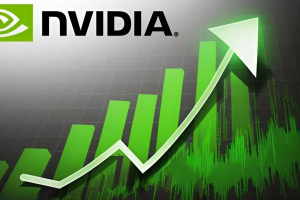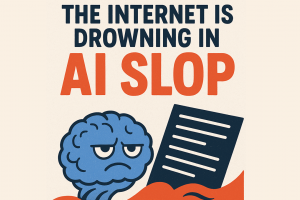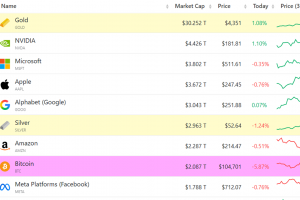The GPU war isn’t just about gaming anymore—it’s about who will own the future of AI, cloud, and innovation. Nvidia, AMD, and Intel are battling for dominance in datacenters, consumer devices, and even national defense. This essay explores their strengths, weaknesses, and what it means for all of us.
“In 2025, the GPU is no longer just about gaming—it’s the new gold powering AI, data, and the future of human progress.”
Imagine waking up tomorrow and discovering that your favorite video game, your favorite AI chatbot, your company’s data analytics, and even the future of self-driving cars all depend on one thing: the GPU war of 2025.
This isn’t just about faster graphics anymore. It’s about who controls the next industrial revolution.
The battle lines are drawn:
-
Nvidia – the undisputed AI king.
-
AMD – the challenger with efficiency and affordability.
-
Intel – the underdog with legacy power and ambition.
This showdown isn’t just about chips—it’s about the future of technology, the future of jobs, and the future of humanity’s relationship with machines.
1. 🎮 From Gaming to Global Domination
Just a decade ago, GPUs were mostly about rendering shadows in Call of Duty. Today? They’re the backbone of the AI economy.
-
In 2015, GPUs were sold mainly to gamers.
-
In 2020, GPUs became crucial for crypto mining.
-
In 2025, GPUs power AI models, autonomous vehicles, supercomputers, the Metaverse, and yes—still games.
This shift turned GPU companies into data-era superpowers. Market capitalization skyrocketed:
-
Nvidia briefly touched $3 trillion in 2024, rivaling Apple and Microsoft.
-
AMD surged thanks to efficiency-focused architectures.
-
Intel, after decades of stagnation, is fighting back with its Xe GPUs and Gaudi AI accelerators.
This isn’t just about who wins gamers. It’s about who wins governments, corporations, and the AI-driven future.
2. 🟢 Nvidia: The AI Empire
If 2025 were a chessboard, Nvidia is the queen.
-
CUDA ecosystem dominance: Tens of thousands of AI engineers code directly for Nvidia GPUs.
-
H100 and B200 chips: The beating heart of ChatGPT, Gemini, Claude, and nearly every large-scale AI model.
-
DGX Cloud & partnerships: Nvidia doesn’t just sell chips, it sells entire AI factories.
The secret? Lock-in. Just like Microsoft dominated with Windows and Apple with iOS, Nvidia dominates AI with CUDA. Once a company builds on Nvidia, switching costs are massive.
But there’s a catch: supply and price.
-
Nvidia GPUs often sell at a premium.
-
AI startups struggle to access them due to shortages.
That’s where AMD and Intel smell opportunity.
3. 🔴 AMD: The Challenger Rising
For years, AMD was “the budget choice.” In 2025, that narrative is broken.
-
MI300 accelerators are becoming a real threat to Nvidia’s H100 series.
-
Energy efficiency: AMD chips often deliver more performance per watt, crucial as data centers face soaring electricity costs.
-
Open-source ROCm ecosystem: Aiming to break Nvidia’s CUDA monopoly, AMD is pushing developers toward alternatives.
And let’s not forget gaming. AMD GPUs power both PlayStation 5 and Xbox Series X, giving it massive reach.
AMD’s strategy is price + efficiency + open ecosystem. Will it be enough? Possibly—if developers fully embrace ROCm.
4. 🔵 Intel: The Underdog with Legacy Muscle
Intel has been written off many times. But in 2025, it’s not dead—it’s dangerous.
-
Gaudi AI accelerators: Used by companies seeking Nvidia alternatives.
-
Arc GPUs: Still finding their place in gaming but improving generation by generation.
-
Foundry services: Intel wants to not just make its own GPUs, but manufacture for others—competing with TSMC and Samsung.
The real power? Government contracts.
Intel is deeply tied to U.S. infrastructure and defense. As AI becomes a national security issue, don’t underestimate Intel’s role.
5. 🌍 Beyond Gaming: Why This Battle Matters to YOU
You might ask: “Why should I care about a GPU war?”
Here’s why:
-
AI on your phone? Powered by GPUs.
-
Your favorite video game’s lifelike graphics? GPUs.
-
Medical imaging that detects cancer early? GPUs.
-
Self-driving cars that may save your life? GPUs.
-
Financial models that protect your investments? GPUs.
Every innovation you touch in the next decade will likely run through silicon designed by Nvidia, AMD, or Intel.
This war isn’t about chips—it’s about shaping the future of human potential.
6. 🔮 The Future Outlook: 2025 and Beyond
Here are the five key battlegrounds that will decide the winner:
-
AI Datacenters – Whoever dominates AI training and inference will dominate global tech.
-
Cloud Gaming & Streaming – Latency is king. GPUs will decide who rules entertainment.
-
Edge Computing (AI on devices) – From smartphones to smart glasses, GPU efficiency matters.
-
Software Ecosystem – CUDA vs. ROCm vs. oneAPI. Ecosystem lock-in = long-term dominance.
-
Government & Defense Contracts – AI is now a matter of national power. Expect governments to play kingmaker.
7. 💡 Lessons for YOU
This GPU showdown is more than a corporate war—it’s a mirror for our lives:
-
Adapt or die. Like AMD, sometimes you’re underestimated until you disrupt giants.
-
Leverage your ecosystem. Like Nvidia, building tools and networks makes you irreplaceable.
-
Never count yourself out. Like Intel, even after setbacks, resilience can make you relevant again.
The question is not just “Which GPU should I buy?” but “Which strategy do I want to live by in my own career and business?”
We’re living in the middle of the GPU Revolution.
👉 Do you believe Nvidia will stay the king?
👉 Or will AMD break the monopoly?
👉 Could Intel shock us all?
Drop your thoughts below 👇—and don’t just keep this to yourself. Share this essay with a friend who’s passionate about tech, because the GPU war is shaping all of our futures.




















